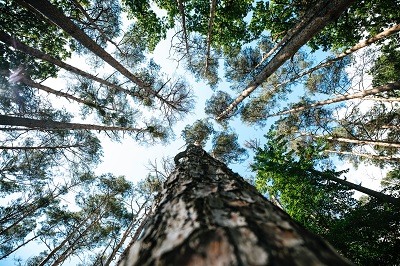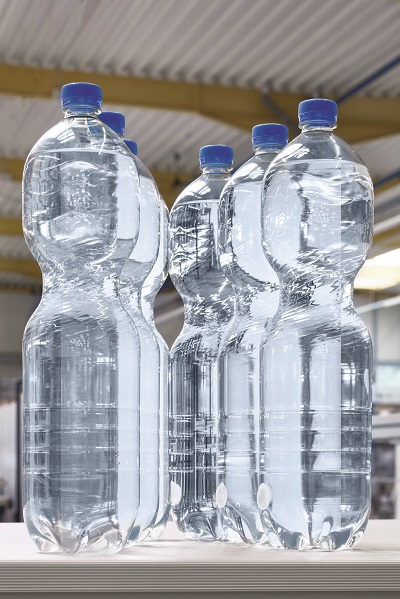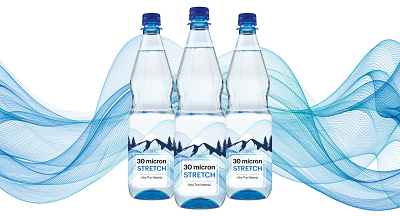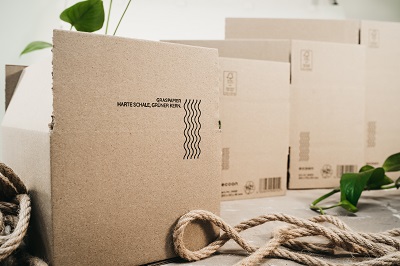Raw materials are the starting point for the production process, which makes their availability immensely important for the packaging industry. But in 2023, the global economy continued to be in the grip of supply bottlenecks and material shortages. This brought efficient use of raw materials and sustainable use of the resources we have available into sharper focus than ever before – a reality that was very much in evidence at interpack. A large number of exhibitors, whether machinery or packaging manufacturers, brought solutions of this nature to the show, including more efficient machines and processes, new materials, and optimised packaging solutions.

Using available resources more sustainably is becoming more and more important. (Photo: Markus Spiske/unsplash)
We consume too many natural resources, as Earth Overshoot Day drastically reminds us every year. The symbolic day of action is calculated each year by the Global Footprint Network, an international think tank. From that day on, all the natural resources around the world that the planet can regenerate in one year have been exhausted. In 2023, Earth Overshoot Day came on 2 August. Twenty-five years ago, the global cut-off date was later, falling in October. The world’s industrialised countries are living in a particularly wasteful manner. Germany had already exhausted its resources on 4 May. For its calculations, the Global Footprint Network uses a wide range of scientific and economic data and figures from sources such as the United Nations and universities. In Germany, environmentalists are now calling on the country’s federal government to pass a resource conservation law with binding protection targets by 2026.
The European Commission has also committed itself to resource conservation. In pursuing its planned packaging regulation, for example, the Commission wants to ensure that all packaging is fully recyclable by no later than 2030. It is also setting out basic criteria around “design for recycling” in packaging for this same purpose. Many businesses in the industry already follow these principles and often gain a competitive advantage.
Plenty of potential to save more resources
For Markus Rustler, interpack president and Theegarten-Pactec CEO, resource efficiency and energy-efficient manufacturing have long been important considerations. Theegarten-Pactec has been carbon neutral since early 2023. “Our customers first rubbed their eyes, then opened their ears. Meanwhile, they are very enthusiastic that we are taking these steps,” Rustler said in an interpack interview. Doing business in a sustainable and resource-efficient manner is part of the company’s organisational philosophy. Although the Theegarten-Pactec machines are already highly energy-efficient, there is still potential to do more for the environment. “Although we are carbon-neutral as an organisation, this does not yet apply to the life cycle of our products. For example, we use cast steel for many of our machines’ basic housing. This is hugely energy-intensive in production as well as subsequent modifications. But naturally, this can also be made in a carbon-neutral process, so that is the next step we want to take.”
Packaging machinery manufacturer Hugo Beck also relies on resource-efficient machine technology. At interpack, for example, the company showcased a new paper packaging machine for e-commerce applications, which saves resources by automatically tailoring the mailing bag size to a variety of product dimensions. In addition, the manufacturer’s flowpacker machines deliver material savings of 60–70% through minimal film use and can handle all types of film commonly processed on machines, such as monomaterial films, recycled films, biofilms and even ultra-thin packaging and shrink films from 7µm.
Wide-ranging effects of conserving resources
A new solution from KHS reduces material usage by up to 90%, doing away with conventional secondary packaging. This involves sticking drink cans or PET bottles together with a few spots of adhesive to create sturdy packs and does not require any plastic overwrap. The new technology is already used by numerous drink producers and illustrates how wide-ranging the effects of conserving resources can be. For example, after a French retail chain changed the packaging for its own-brand water from shrink overwrap to the KHS solution, it saved more than 250,000 tonnes of plastic per year at a rate of up to 25,000 bottles per hour.

With the universal adhesive used for each, both PET bottles and beverage cans are even easier to detach from each other. (Photo: Frank Reinhold)
KHS’s Nature MultiPack technology is also suitable for mass production at up to 108,000 containers per hour and offers a variety of resource-saving secondary packaging solutions. One example is Loop Lite, a recyclable PET bottle for heavily carbonated beverages. The lighter-weight bottle is made of 100% rPET and consumes up to 25% less material than conventional branded CSD bottles. The label achieves a reduction in material usage of up to 30%, with the special geometry of the newly designed rPET bottle base allowing for even lower pressure during stretch blow moulding and in turn reducing energy consumption by as much as 15% – cutting costs in the process. This makes the packaging’s carbon footprint up to 60% smaller than standard PET solutions on the market.
Thinner sleeves for a smaller carbon footprint
One of the consequences of using less material is releasing less CO₂ during production. Austrian film manufacturer CCL Label has recently added a thinner version of its stretch sleeves to its range. These are intended for one-litre reusable PET bottles, most of which are used in the German mineral water market. The newly developed sleeve is only 30 micrometres (0.030 millimetres) thin, making it the thinnest sleeve of its kind available on the market, according to the company. It is made of the monomaterial polyethylene (PE), whose elastic properties mean it does not require heat or adhesive to be attached to the bottle – another area in which emissions can be prevented.

Ultra-thin films for sleeves also help to cut emissions. (Photo: CCL Label)
Avoiding consuming fossil resources when making plastic packaging is a major goal of many manufacturers. One potential alternative is bioplastics that are produced from renewable resources – or even better from agricultural and food leftovers. For example, biotech company NatureWorks uses starch from plants such as corn or sugar cane, splits it into lactic acid using micro-organisms, then polymerises this into the biopolymer polylactide (PLA). The business markets the PLA range under the brand name Ingeo, using the material to make compostable coffee capsules, tea bags, tableware or filament for 3D printing. The plant-based biomaterial reportedly has a 70% smaller carbon footprint than petrochemical-based plastics. The entire range of Ingeo biopolymers is manufactured at a production facility with a capacity of 150,000 tonnes a year in Blair, Nebraska. A new, fully integrated production complex capable of manufacturing 75,000 tonnes per year is currently being built in Thailand and is scheduled to open in the second half of 2024.

Grass paper can be produced in a highly eco-friendly process, saving wood. (Photo: Ecoon)
Paper is currently enjoying significant popularity and taking plastic’s place across a multiplicity of packaging solutions. It is usually made from wood, a slow-growing resource. But this is another area in which valuable materials can be saved – for example, through the use of grass fibres. Grass is a fast-growing alternative with a positive life cycle assessment. Manufacturing grass paper uses significantly less water, less energy, requires no chemicals and releases almost five times less CO₂ than conventional paper production. Since it is available locally almost anywhere and everywhere, there is no need for long-distance shipping – also good for the material’s carbon footprint. Grass paper currently consists of up to 50% grass fibres, with the remaining portion coming from recycled paper. Paper made exclusively from grass fibres does not yet exist. The sustainable material is already being used in a whole assortment of packaging applications. interpack exhibitor Körber MediPharm also wants to use grass paper with its pleasant smell and special texture, and the business has commenced testing and development projects along with several well-known pharmaceutical companies for safe secondary packaging made of grass cardboard. The results have been consistently positive. The cost of the new packaging material is similar to that of traditional cardboard, and the material offers the same high level of product protection.














